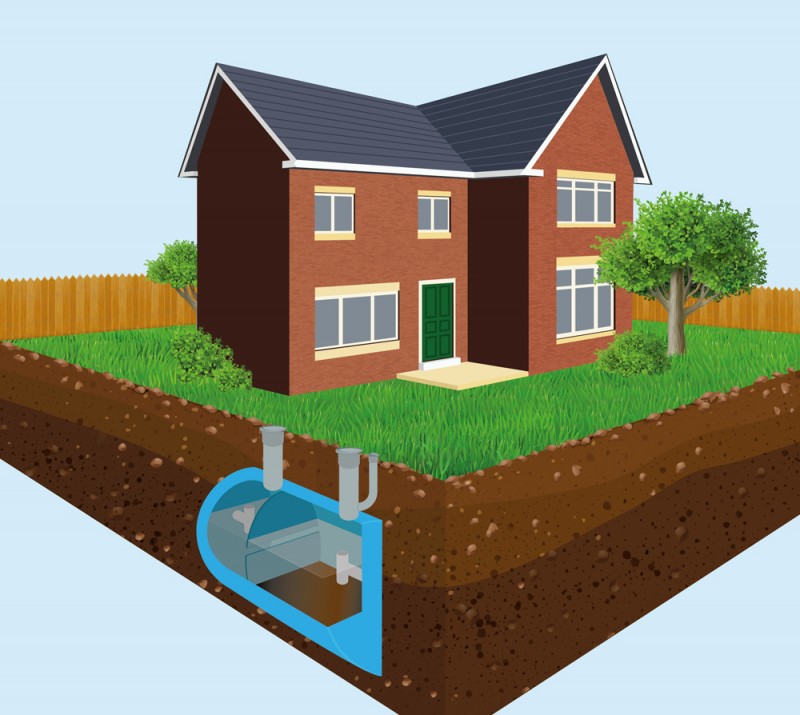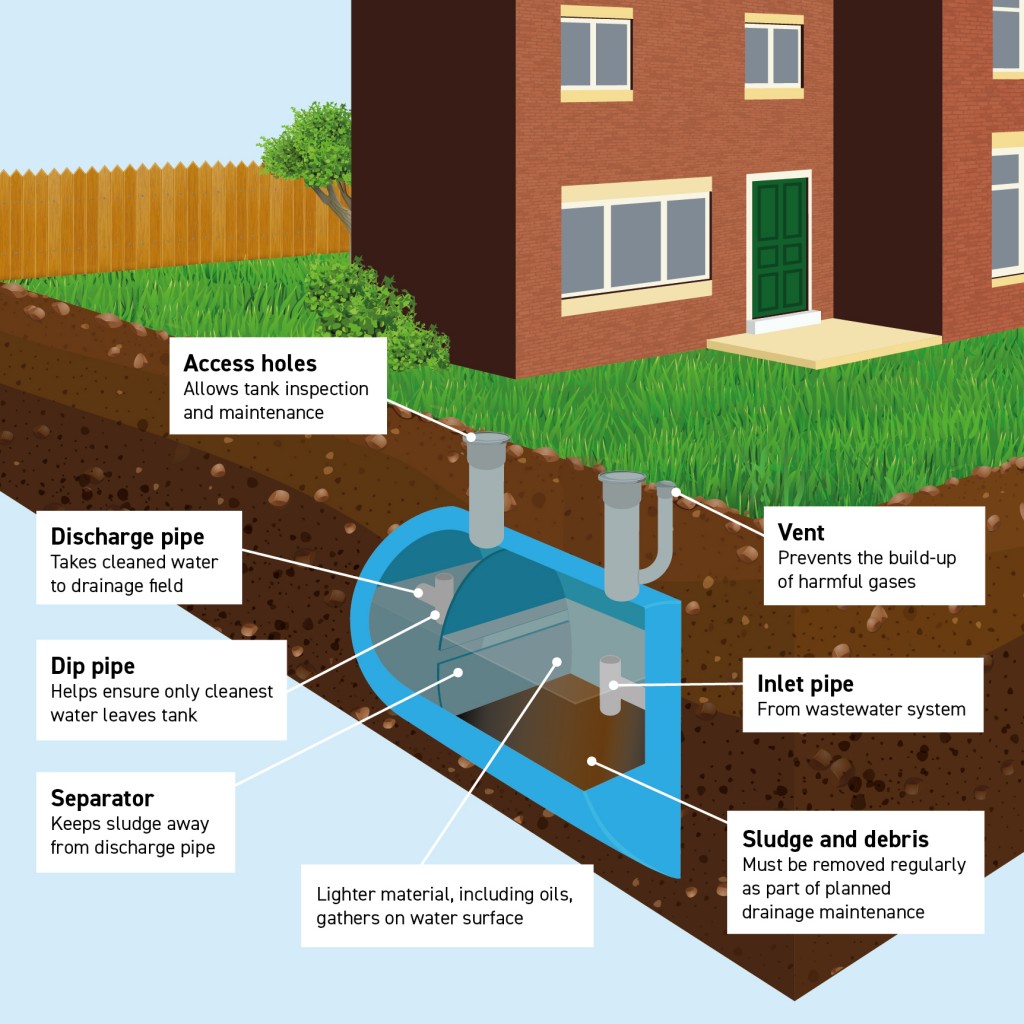Septic tank operators urged to make regulation checks

New regulations for discharging wastewater from septic tanks have now come into force – and householders and businesses that fall foul of them risk heavy financial penalties or even criminal prosecution.
Since January 1st 2020, the regulations, called General Binding Rules: Small Sewage Discharge to the Ground, have not allowed wastewater from a standard septic tank to be discharged directly into water courses.
The regulations were approved in 2015. However, the Environment Agency (EA) gave until the start of 2020 for homeowners and businesses to upgrade their septic tanks.
The regulation change applies to many thousands of properties with off-line wastewater systems. Many owners and managers of these properties will have already taken the necessary steps to ensure they are in line with the regulations.
Septic tank owners may have to take urgent action
However, there are likely to be a significant number who still need to take urgent action or may still be unsure as to whether their septic tank systems meet the regulations so are still lawful.
Richard Leigh, Development Director of drainage and utility specialist Lanes Group plc, said: “If the EA decides a septic tank does not meet the regulations, it can take enforcement action which can include financial penalties and issuing of notices to require remedial work.
“The EA can also take out a criminal prosecution. This could result in hefty fines being imposed by the courts. If the EA can prove that a septic tank has caused a serious pollution incident, the fines could be very serious indeed.
“If people have a septic tank and have not taken steps to check that it meets regulations, or they are not sure, or they know it does not comply and have not done anything about it, action is now urgent.
“We have septic tank experts at depots across the UK who would be happy to advise septic tank owners on the steps they need to take, if necessary. We can also carry out any work needed to ensure off-line wastewater systems comply with all relevant regulations.

What is a septic tank?
A septic tank is a simple gravity system for holding and processing wastewater. Wastewater enters the tank, where solids are allowed to fall to the bottom of the tank where they form a sludge.
A pipe located above this sludge layer then allows the remaining water to leave the tank to be discharged or further treated.
Lanes has created a Best Practice Guide for septic tanks. It is one of a series of free-to-download practice guides we have created to give clear dos and don’t on drainage issues for organisations and the general public.
What has changed about septic tank regulations?
Before the regulations came into force, properties with offline sewage systems – those not connected with the mains sewer system – could discharge wastewater from a septic tank in two ways.
It could be allowed to soak into a drainage field, also referred to as a soakaway. This is a large area of ground, at least 30 metres from a water course, usually prepared with a network of pipes. The drainage field allows the wastewater to seep away slowly to give bacteria in the soil time to neutralise the effluent.
Also, the effluent could be discharged directly into a water course, via a sealed pipe. It is this second option that is no longer permitted under the regulations, because wastewater discharged from a standard septic tank does not meet EA quality standards.
Who is liable for water discharge under septic tank regulations?
The EA identifies the individual or organisation responsible for the septic tank as being its “operator”. It is the operator who will be deemed guilty of an offence if found to be in breach of the regulations.
An operator of a septic tank includes:
- The owner of a property that has an operational septic tank.
- The owner of a property that shares a septic tank with a neighbouring owner.
- Any person responsible for the maintenance of the septic tank under a written agreement, such as a lease, or a tenancy agreement.
What are the options to upgrade septic tank systems?
Septic tank operators can consider a number of options to ensure they stay withing the EA’s water discharge regulations.
- Connect to a mains sewer. Septic tanks have, conventionally, been installed where access to mains sewers is difficult. However, over time, the mains sewers may have been extended. This means connecting the property to a main sewer may now be the most cost-effective solution.
- Install a drainage field. It may be possible to create a drainage field within the property’s boundary. However, there are regulations governing the location and design of drainage fields which may prevent this from happening.
- Install a small sewage treatment plant, also referred to as a package sewage treatment plant. This has a bio disc or an aeration system that enhances the bacteriological processing of the effluent so discharge water will meet EA standards.
- Install a secondary sewage treatment unit to the septic tank. In most cases, this would be an ultra-violet filter, which kills the bacteria before it is discharged to a water course.
Treatment systems must meet the British Standard in force at the time of installation. Standards currently in force for new systems are BS EN 12566 for small sewage treatment plants and BS 6297:2007 for drainage fields.
It should be noted that specific requirements are needed, including a permit to discharge, in what is called a Groundwater Source Protection Zone 1 (SPZ1). These zones protect water sources used for commercial use or domestic consumption.
Effective maintenance and repair vital to meet regulations
The EA makes it clear in its guidance on the general binding rules that it is essential to maintain these assets so they work properly at all times.
This includes removing sludge before it exceeds the maximum capacity allowed by the specific septic tank or water treatment plant.
Anyone who carries out maintenance on the wastewater system must be “competent”. A company selected to dispose of waste sludge must be a registered waste carrier. All maintenance must be in line with the manufacturer’s advice.
Particular attention must be given to critical repair issues such as:
- Leaks
- Cracks in pipes or tank walls
- Blockages
- Signs of poor drainage, such as pooling water
- Equipment failure, such as pumps or motors
- Safety failures, such as unsecure access panels
Seek expert advice about septic tank regulations
The key message for operators – domestic or commercial – is that they should be sure, and can prove, that the septic tanks they are responsible for meet all aspects of the EA’s general binding regulations.
Richard Leigh said: “If anyone is not sure about this, our teams at Lanes would be happy to assist, with expert advice on the design, location, operation and, if necessary, installation of all wastewater treatment systems, as well as their ongoing maintenance.
“Failure to comply with the general binding rules puts operators at serious financial risk and could result in a criminal record. These are outcomes that both business and domestic septic tank owners cannot countenance. The financial and reputational risks far outweigh the effort and investment that will be needed to ensure compliance.”
Lanes Group partners with key water treatment plant and septic tank manufacturers so we can select and install the right system and best water treatment solution for each of our customers.
If you have concerns about a septic tank, call Lanes free-of-charge on 0800 526 488. Or email sales@lanesgroup.co.uk.







